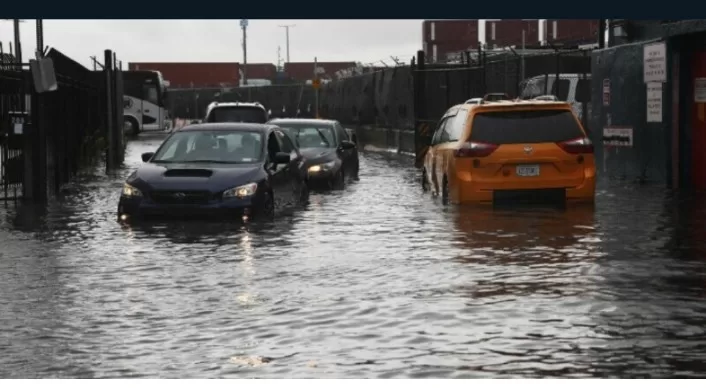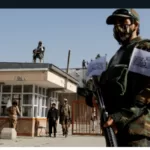In an overnight deluge, the northeastern United States bore the brunt of heavy rainfall, resulting in parts of New York City submerged under water on Friday. The impact was significant, leading to disruptions in America’s financial capital, affecting subways, airports, and daily life.
LaGuardia Airport, a vital transportation hub, was compelled to shut down one of its terminals as dramatic images circulated on social media, depicting passengers wading through water levels exceeding the tops of their shoes.
Mayor Eric Adams issued a compelling plea, urging residents to remain indoors. Streets were rendered impassable, and subway stations were inundated. He emphasized the extreme difficulty of navigating the city due to the adverse conditions.
Photographs from across New York City portrayed cars partially submerged and traffic snarled, with major thoroughfares experiencing complete blockages.
Shopkeepers found themselves battling against flooding, striving to protect their merchandise and mitigate the ingress of water into their stores.
The extensive New York City subway system was not spared either, with several lines in Brooklyn shuttered due to flooding.
The recurring nature of such events prompted frustration among residents. Cab driver Ahmed Abdou, originally from Egypt, expressed disappointment in officials’ ability to manage what he considered a regular occurrence. He remarked, “The subway in the city is terrible. All the storms, they come every year at the same time. We should anticipate it better.” However, Rohit Aggarwala, the city’s Environmental Protection Commissioner, attributed the challenges to the rapid pace of climate change, outstripping the city’s capacity to adapt.
Governor Kathy Hochul declared an official state of emergency encompassing New York City and its densely-populated suburbs, including Long Island and the Hudson River valley. The National Weather Service issued warnings of ongoing flooding, with the potential for rainfall rates of up to two inches (5.1 centimeters) per hour. The total accumulation for the day could reach seven inches (18 centimeters), elevating the risk of flash flooding in urban and areas with poor drainage.
At Grand Central Terminal, a central transportation hub in Manhattan, commuters faced delays of hours as they waited for trains. Some trains were ultimately canceled, leaving passengers stranded and underscoring the logistical challenges posed by the extreme weather event.
This inundation stemmed from a low-pressure system along the mid-Atlantic coast, drawing in moist air from the ocean. Notably, in September 2021, Hurricane Ida caused extensive flooding in the region, particularly affecting Brooklyn and Queens, resulting in tragic fatalities, especially among residents trapped in basement apartments. Both boroughs witnessed severe flooding during this recent episode, prompting residents in flood-prone areas to exercise caution.
In the New York City subway, one of the world’s most expansive systems, water infiltrated stations, cascading down stairs and ceilings. The disruption to subway services, particularly in Brooklyn, further compounded the challenges faced by millions of city residents who rely on this essential mode of transportation.
Governor Hochul emphasized the urgency of restoring subway operations, as many students depend on it for their daily commute to school. This situation raised questions among parents regarding why schools remained open amid such inclement weather, leaving children stranded in classrooms.
The events of the day underscored the need for improved communication and preparedness in response to extreme weather events, a pressing concern as the effects of climate change intensify. Brooklyn Borough President Antonio Reynoso emphasized the urgency of adapting to the climate crisis, stating, “The climate catastrophe is here, and we must act accordingly.”
By AFP




